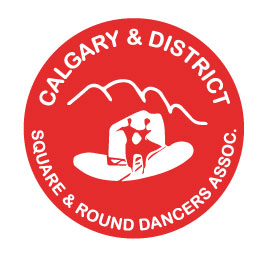
To learn about Round Dances and lessons in Calgary and District,
contact the CueSteps club.
Round dancing is closely associated with square dancing. At many local square dances, the caller will include round dances.
Round Dancing is partner dancing that uses the same dance rhythms (such as Waltz and Two-Step) as ballroom dancing. As in ballroom dancing, the dancers move in a counter-clockwise direction (“line of dance”) around the dance floor. Round dancing differs from ballroom dancing in that each dance has been choreographed ahead of time, and a “cuer” or leader tells the dancers what steps to do. As a result, all the dancers are dancing the same steps at the same time. The cues are given just ahead of the beat, so the dancers have time to respond.
For the man, the round dance cuer is a savior. Someone else has thought up what steps should be done to a particular piece of music. The choreographer has selected the steps that best fit the music. Instead of only six or eight different steps, a round dance might easily have 30 or 40 different figures. You won’t get bored doing the same steps over and over.
At the start of each new dance, the cuer announces the name of the dance and the level (“phase”) of the dance. This allows dancers to determine in advance if they know the dance figures to be used.
Round Dance lessons often start with the basics of dancing the Waltz and Two-Step. As dancers gain experience, they move on to other rhythms such as Jive, Foxtrot, Cha-Cha, and Rhumba.
Round Dancing classes are available in many centres in Canada and around the world. Roundalab, the international organization for Round Dance leaders, has standardized the figures/steps for each dance rhythm. They have created a series of Phases/Levels for advancement of dancers from Beginners to advanced that is followed world-wide.
